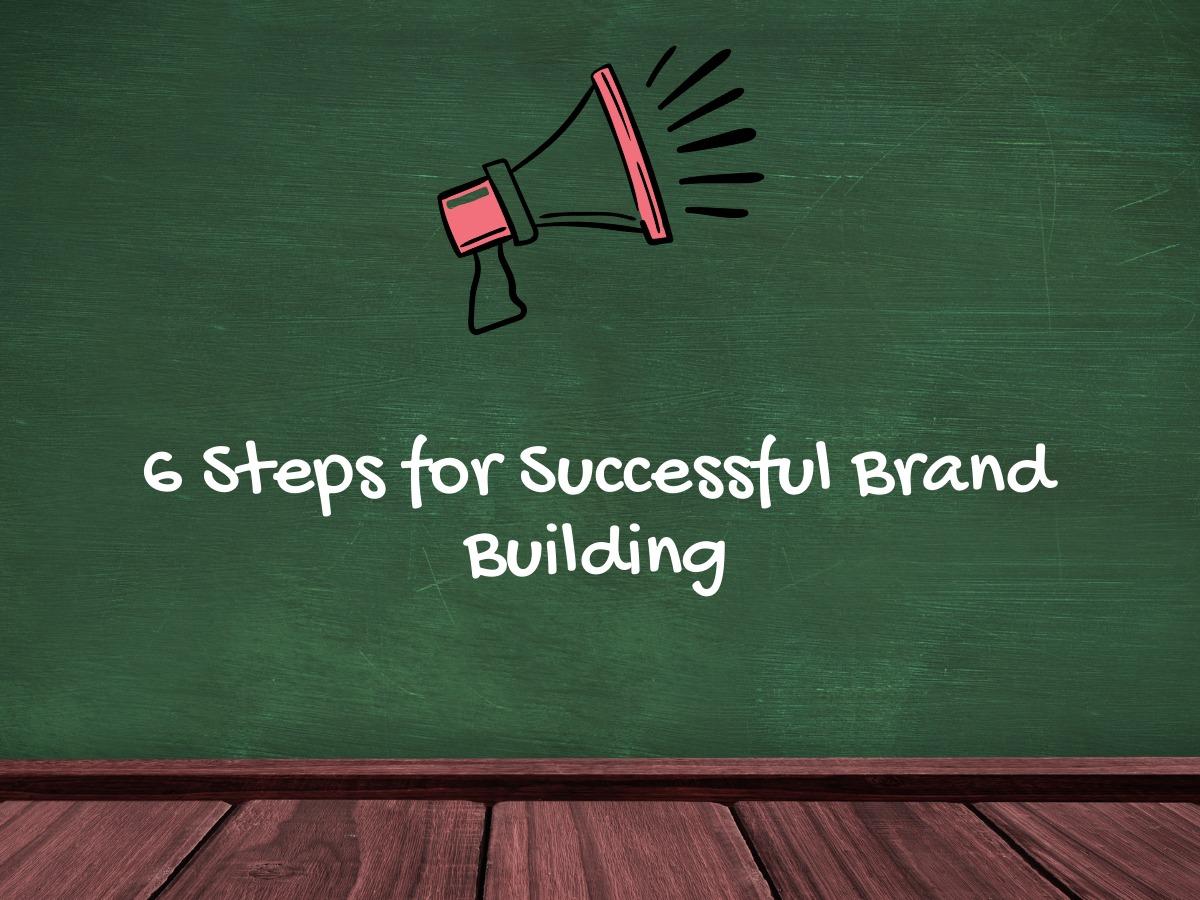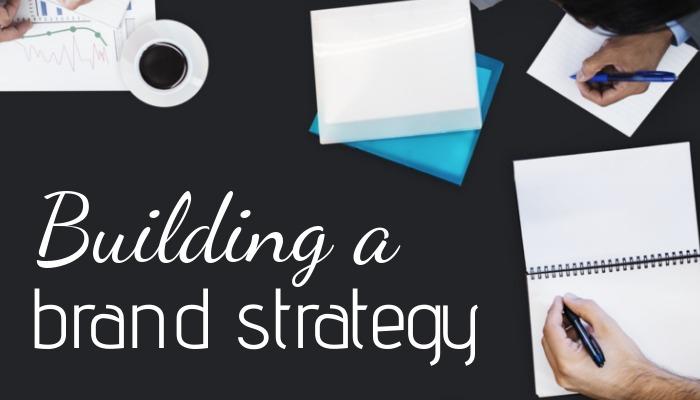Brand building is about establishing your public identity. Your brand is how people come to know you. It is how they come to identify you. From your overall voice, to your logo, to your website, all elements of branding need to come together in order to help you connect to audiences. In the interest of branding, companies will often create a comprehensive brand guide. This type of guide enables everyone to stay on the same page and consequently understand the overall direction the brand is headed.
What exactly does your brand represent? This is hugely important to define prior to setting out on a branding journey. In other words, when people see the various digital and marketing elements associated with your brand, what do you want them to think, feel and experience? This seems pretty comprehensive, right? And it is, building a brand does not happen overnight.
Think of some of the more prominent brands you know. Apple for instance. Apple’s signature voice, messaging, logo and overall identity took years of cultivating. The Apple marketing strategists knew exactly what they were doing, and they knew that developing a brand would be a process—but one highly worth it. In this article, we take a look at the six essential steps involved with any effective brand building strategy.
Table of contents:
- ● Brand Building and Reputation
- ● Step 1: Define Your Audience
- ● Step 2: Building a Brand and the Competition
- ● Step 3: Defining Your Voice – What is Your Brand Mission?
- ● Step 4: Set Your Brand Guidelines
- ● Step 5: Start Marketing Your Brand
- ● Edit in Design Wizard Step 6: Measure and Track Brand Marketing
- ● Your Brand is Who You Are
Brand Building and Reputation

Branding will involve all aspects of your business: your online presence, your site, your sales materials, your office space, business cards, customer service experience, you name it. Your brand is your reputation and so you want to ensure that all aspects of that reputation line up. This is precisely where branding comes into play.
Step 1: Define Your Audience

If your brand is about people’s perception of you, then it only makes sense to know something about those people. Your target audience is the core demographic in terms of your marketing efforts. Who are they? Google their interests. What are their buying habits? Income level? Any information you can gather on this target group, the more your message and branded content can be geared toward them.
When building that brand, you want to ensure that you are addressing their needs and wants. What’s more, you are cultivating an image and identity that they feel comfortable with. The only way to know what makes that audience comfortable is to take the time to learn all you can about them.
Take advantage of your social media accounts to this end. Rely upon Google analytics to give you more in-depth audience insights. Send out surveys to existing clients and email subscribers to get some firsthand knowledge regarding audience interests/behaviors.
Create a Buyer Persona
Many companies will actually create an ideal buyer persona when nailing down a brand marketing strategy. A buyer persona is basically a representative of what your perfect customer looks like—in all aspects. The more detailed the persona, the more you will be able to gear your branding and content strategy towards them. With a persona (or multiple personas) you are thus ready to create branded material that speaks directly to a highly relevant demographic.
Step 2: Building a Brand and the Competition

That said, your brand is also about your differences. Meaning, you have some unique characteristics and elements to your business, such that differentiate you from others out there. What are they? How might these key differences factor into your overall brand building strategy? And it doesn’t just have to be differences in terms of product offerings or customer service approach—you might think about incorporating big picture differences into your brand identity.
Social/Political/Environmental Brand Strategy
When thinking “big picture,” think beyond the immediacy of what you as a business do. Rather, consider your response to the political picture, or an environmental stance you might have. How about a social position? In this day and age consumers are looking to work with brands that stand for something bigger than just themselves.
Step 3: Defining Your Voice – What is Your Brand Mission?
Nailing down that brand mission is going to be central to your branding efforts. This is the crux of who you are as a company. You are going to want to define your value proposition, your vision and your ultimate goals. Your brand mission statement and supporting materials are going to create that trust factor which is so important to your business.
Once you’ve cultivated that brand mission, you want to make sure that everything speaks to it; that is to say, all of your content and marketing materials need to reflect this mission. They need to reinforce the value that your brand brings. Branding really is about that core message.
Tell Your Brand Story
In developing your brand, you want to do what you can to make it accessible. Storytelling when it comes to brand building is a great way to draw people in and compel them to further engage with your business. It can be the story of how you got your start. Or maybe it’s the story of how you developed your first product. Get creative, cultivate your voice, and give people insight into who you truly are.
Step 4: Set Your Brand Guidelines

Brand guidelines are exactly that—a guide or guides your company will use to help achieve brand consistency. Keep in mind, your brand collaterals are going to appear across numerous channels. From your social media accounts to your website to any printed materials, all will feature the elements that went into building your brand. Establishing guidelines to this end will just enable you to stay on top of things and ensure everything is organized. To achieve your marketing goals and compete with your competitors you can also hire a business marketing services agency.
The branding process has numerous moving parts involved. And certainly, talking through the steps is crucial, but going further and creating an actual brand guide helps solidify your business’s brand activities. There are tons of resources available online to help organizations create a comprehensive brand guide. This way too, all relevant stakeholders are on the same page as far as brand building strategies go.
Elements of a Brand Style Guide
What exactly does a brand style guide include? Certainly, the basics, so your logo and various iterations of that logo for use on different channels to include your website. It may contain color palettes along with other such brand examples. The guide could also have descriptions of your target audience, value proposition and mission. Including your brand story is another important element of an effective brand style guide.
Step 5: Start Marketing Your Brand

Building a brand is all about getting that brand identity out there. After all, your brand is your identity and you want that identity to resonate with people in a big way. You have taken the time to craft all of these brand components, now you want to put them to work for you. Ensure that the elements of your brand—from typography to logo to voice/style—are featured across all channels that you use. Take advantage of social media accounts to highlight the value and mission of your brand. You might even reach out to partners, influencers and other people/companies to help you promote your company’s brand.
Marketing a brand has to be a consistent and comprehensive effort. This means you need to come up with a solid game plan versus haphazardly approaching a marketing campaign. Strategy is everything. Make sure your efforts are systematic. Make sure you’re targeting the right demographic. And definitely make sure you are displaying that brand in as many places as you possibly can.
Social Media, Your Website and Your Brand
Social media is perhaps the one channel you have where you can literally utilize every component of your brand. Facebook and Instagram, YouTube and Pinterest all give you the opportunity to showcase your logo, speak your brand voice, tell your story, and get your message across. This is why having a social media marketing campaign ready to go once your efforts have come to fruition is imperative.
Edit in Design Wizard Step 6: Measure and Track Brand Marketing

This is one step you do not want to skip over. How will you know if the brand building is actually working if you don’t take the time to track and consequently measure the results. There are numerous paths for doing this. Google Analytics is a great tool to use when tracking how effective your brand marketing is. Facebook also enables you to gauge the effectiveness of your brand building strategy. Some firms also hire third-party specialists who provide detailed reports, offering a number of different metrics.
When you do start to gauge how successful or unsuccessful your brand building strategy is, then you will likely need to make some adjustments. Remember, branding takes time. Patience is most definitely a virtue here. Take a good long look at how people are responding to your brand as a whole. Are they getting the message you want them to get? Are they reacting to those calls to action as you’d hoped? If not, how might you pivot in your efforts moving forward to generate more overall engagement?
The Metrics to Pay Attention To
Some of the more important metrics you should probably take note of in your measurement process: digital click-through rates, bounce rates, conversions, inquiries, email subscribers. And those just scratch the surface. There are a ton of different metrics and if looked at together can give you a bigger picture perspective of where you stand as far as brand building.
Your Brand is Who You Are

Branding is both an art and a science you might say.
It is about applying a formula and a consistent approach in order to generate the exposure you need. It’s about following the company guidelines established in a regularly scheduled way in order to create this overarching identity.
It’s about sticking to the strategy and digital game plan in order to eventually cultivate the reputation you want. Online reputation management is no longer a luxury for a brand, it is a necessity. But branding is also about how creative you can be when it comes to reaching people. It’s about thinking outside the box when creating your marketing materials. And it is about being intuitive when it comes to developing your voice and message so that you meaningfully connect with your audience.
Why spend all of this time on your brand…
- Branding increases the value of your business. If you are more than just a company, more than just the products you offer, but rather you are a brand, that adds instant value. Ultimately, if you do eventually decide to sell the company, the prospective purchaser will be paying for a dynamic and well-identified brand.
- Branding helps get new customers. Generally speaking, people want to do business with someone they trust and someone that is offering more than just cut and dry sales. Building your brand, you have the chance to tell your story and explain how you are able to help people in their daily lives. This then, draws more people to you and hopefully these are people looking to buy.
- Brand building is also based in psychology. Numerous studies have found that customers are driven by emotional and psychological pulls when deciding whether or not to buy something. With your brand, you tap into this. That is to say, all elements, from the colors you use to the content you create, have an emotional aspect to them. The more a user becomes familiar with these aspects of who you are, the more apt they will be to do business with your brand.
- Branding is not just about consumers. Establishing a brand is also about creating a company culture that makes employees feel safe, welcomed and respected. Your team can rally around your brand. Your team should always be reassured by your brand as this will encourage them to stand behind it.
Whatever approach you take to branding, whatever step you start at, begin with the basics as outlined in this article. Define the core components of your brand and make sure that these are always highlighted across every channel you use.

anne carson
Anne is a former English professor turned content writer. Holding a PhD in Literature, she spent almost a decade in academia putting that degree to use, until finally realizing it wasn't exactly the best fit. A full-time writer, she's learned a great deal about the numerous subjects. She knows a lot about design trends and design templates. A mom of five (two teenagers and three dogs).


